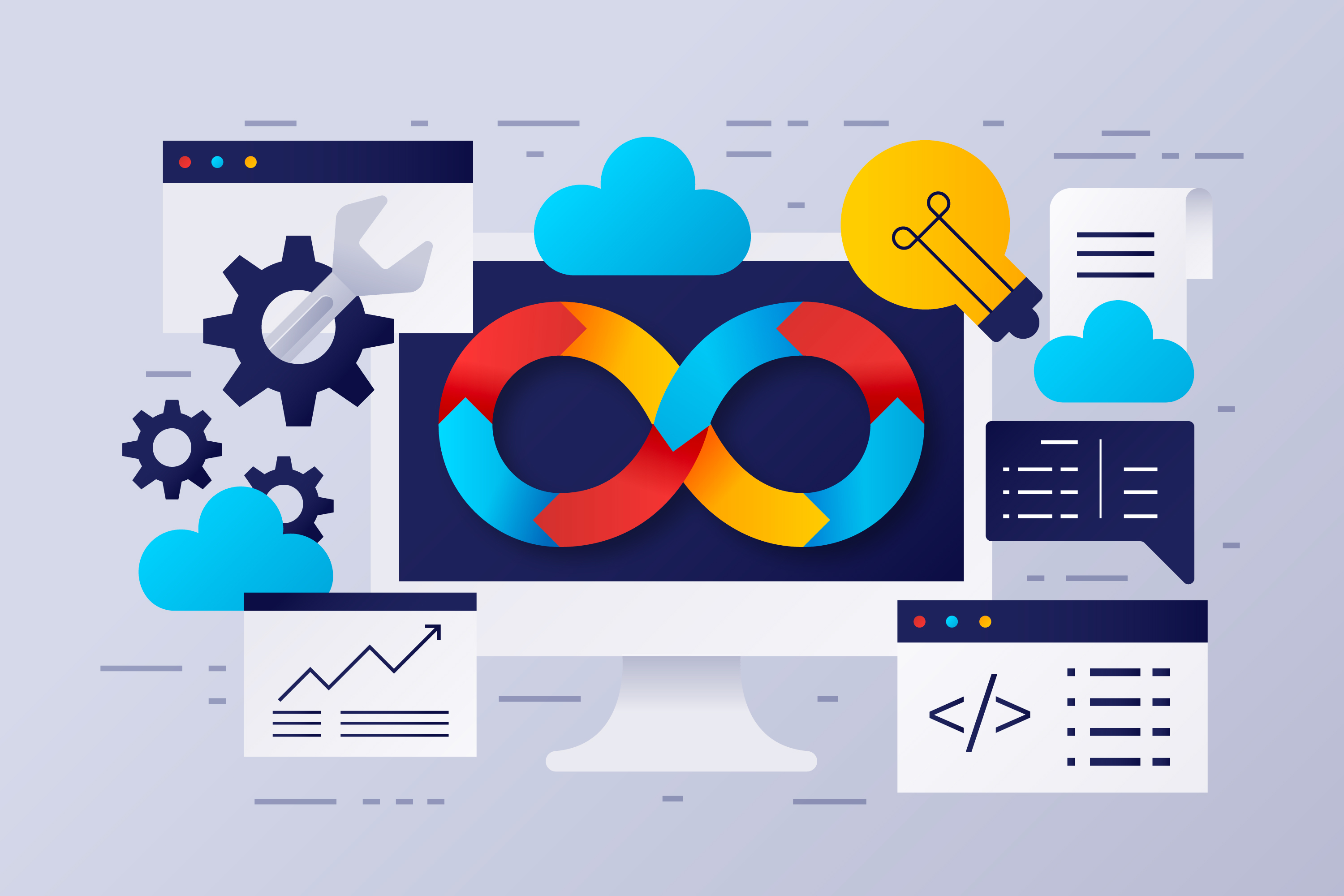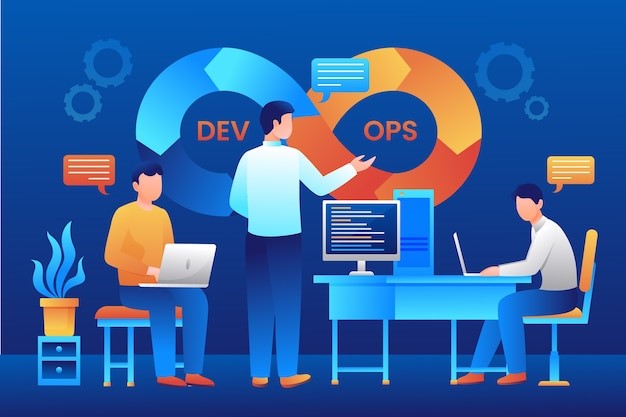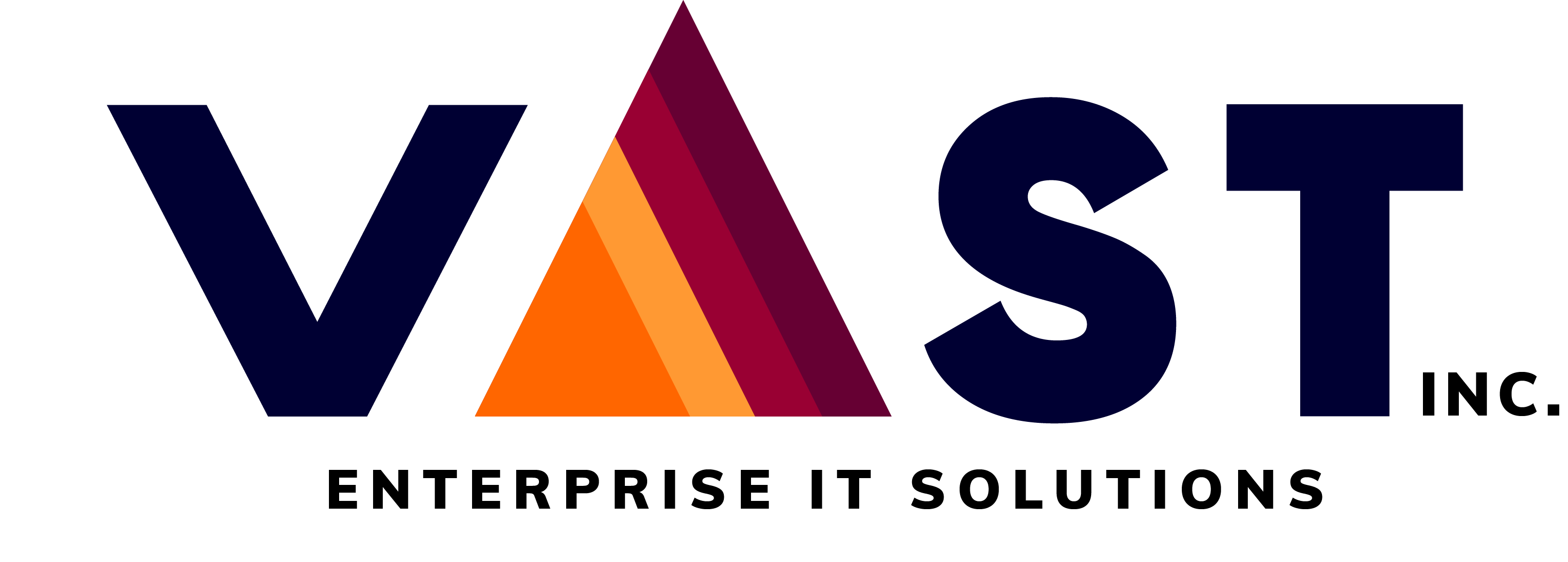- September 12, 2023
- vastadmin
- 0
Introduction
In this new era of fast-moving technologies, new tools and methodologies are constantly involved and emerging to make IT processes efficient and seamless. Among these, DevOps has been a quite popular term and emerged as a game-changer, enhancing the working of development and operational teams. These DevOps are very easy and convenient to use. You must have wondered, “What is DevOps”, “What are the best tools to learn DevOps”, or “How to start DevOps”, Then you are in the right place. This comprehensive blog is just made for you and aims to answer your questions and shed light on the crucial aspects of DevOps. In this blog, we will learn what are the best tools to learn DevOps, what are its features and in which industries they are used. We will also guide you on how to start DevOps.
What is DevOps
DevOps is a methodology of combining Development and Operations to make the application more efficient, secure and fast. It enables quick deployment of the application by automating the repetitive tasks. It also eases the maintenance of the existing deployments.
DevOps helps to improve the communication between Development and Operations teams and makes collaboration smoother. This helps the organization to build stronger bonds among the departments. This agile framework enables businesses to get competitive advantages. It helps them to achieve robust results in the market and better customer service.
Why is DevOps used?
There are multiple reasons and factors why DevOps is used in the world of IT. According to Statistica, 47% of software development companies claim to use DevOps Methodology. DevOps trend has been rising among the IT industry and it clearly has a bright future.
Here is why DevOps is Used
- Faster Deployment: DevOps helps faster deployment by automating repetitive tasks, increasing the speed of delivery of the application and reducing manual errors.
- Adopting CI/CD: CI/CD forms the foundation of DevOps practices. Continuous integration helps to integrate code automatically into a shared repository multiple times through automated building and testing to maintain a deployable state. Continuous delivery automates the process by continuously delivering the changing code into staging environments for faster software releases.
- Refined Collaboration: Since DevOps integrates the collaboration between Development and Operations teams, it improves communication and a better understanding of each other which leads to faster resolution of errors.
- Automation: With the help of DevOps, repetitive tasks are automated and the risks are reduced while maintaining consistency across environments.

Where is DevOps used and who needs it?
DevOps is a versatile approach that is needed by all kinds of industries with varying sizes. It automates workflow, fosters collaboration and promotes continuous improvement. This enables organizations to work efficiently by combining Development and Operations. Thus, by using the correct and the best DevOps tools, an organization can smoothly and quickly deliver the applications and improve the customer experience.
Here is a breakdown of where DevOps is used and who needs it.
- Software Development Industry: Software development companies that create and maintain applications, whether they are web, mobile or software-based face issues like struggling with delivery of software or failure of delivery. DevOps is a lifesaver for these types of industries. It helps them streamline the development and delivery by embedding CI/CD practices.
- Enterprise: Enterprises that often deal with huge data and complex IT environments. They need to maintain their portfolio and keep up with changing market situations. They need software that deals with highly available and performant online stores. DevOps is a game changer for them. It helps them to automate deployment pipelines, monitor website performance and ensure real-time updates during peak shopping seasons to deliver a smooth customer experience.
- Financial Institutes: Financial institutes like banks, insurance companies, etc, need secure software systems for online banking and trading platforms. DevOps enhances security and compliance. They strengthen the security of the financial platforms of these institutes and ensure compliance with stringent regulatory requirements, safeguarding sensitive financial data.
- Healthcare: Health organizations struggle to manage electronic health records (EHRs), telemedicine platforms and other critical healthcare applications. DevOps in Healthcare helps to maintain these records. It improves the reliability and security of the system and compliance with healthcare regulations.
Why you should learn DevOps
As we discussed previously, DevOps is the new upcoming technology in the world of IT. It is not something that only IT professionals need in their business, but also other various sectors that are not even related to the IT sector.
To build collaboration between Development and Operations, specific DevOps tools are used to facilitate this process. Some of the best tools to learn DevOps are Jenkins, Kubernetes, Docker, Puppet, Chef, Ansible and much more.
What are the best tools to learn DevOps?
DevOps has a large variety of tools that are unique to its own properties. Thus it works in a cross-functional mode, instead of just one single tool. These tools are also known as the DevOps Toolchain.
Organizations practice DevOps in their day-to-day activities and coordinate with these tools to automate their regular and repetitive activities which help them to plan, create, verify, package, release, configure, monitor and version control.
In order to apply DevOps to your activities, one needs to understand and know what are the best tools to learn DevOps and how to apply them to their organization
We have been often asked by amateurs what are the best tools to learn DevOps. Thus, this is a guide just for them.

DevOps tools are categorised on the basis of the production activity that they work on. Here is the list of the best tools to learn DevOps
Jenkins – Automation tool
Jenkins is an open-source automation tool that helps to automate software development activities like building, facilitating CI/CD, testing and deploying. It is designed for internal as well as external plugins. Jenkins is a Java-based open source that is supported by popular operating systems like Windows, MacOS, etc.
Features
- Pipelines: Pipelines form a complete flow of building, testing and deploying of code via DSL (Domain Specific Language) called Pipeline DSL. Pipelines can be created through a code through a Jenkins file or through Jenkins UI. This pipeline makes it easier to pave the way for the CI/CD process, incorporate various types of jobs in a single pipeline, and can be source-controlled along with the codebase.
- Plugins: Jenkins is made up of various types of internal and external plugins. These plugins provide tools, give support to various control systems, and integrate testing frameworks. These plugins are versatile and can be easily customized. This allows teams to adapt to Jenkins to fit nearly any sort of application work.
Industries in which Jenkins is used: Jenkins is majorly used in industries like Software development, Automative and Finance
Benefits of Jenkins
- Quick Iterations
- Better code quality
- Early bug detections
Git – Version Control Tool (GitLab, GitHub, BitBucket)
Git is the best and most used Version Control tool. It helps developers keep track of all the updates and changes in their code so that they can easily return to their previous code if some error happens. Git DevOps tools are easy to apply as it is compatible with most of the protocols like HTTP, SSH and FTP. It allows multiple people to work on a project in real-time and provides features like branching and merging.
Git has additional storage tools- GitHub and GitLab are cloud-hosted code repositories and BitBucket is a source code hosting service. Out of these GitLab and BitBucket are designed and highly recommended for enterprises.
Industries in which Git is used: Git is a very common tool that is used by basically all the industries in which coding is involved.
Benefits of Git:
- Better collaboration with teams
- Historical tracking of code updates and changes
Amazon Web Services (AWS) is the widest-used cloud services tool. It provides a cloud-based DevOps solution. It has the maximum market cap in the category of Cloud-based computing. AWS provides services under categories like PaaS, SaaS, and IaaS, including compute, identity and access management (ACM), storage and networking. It offers cloud-based solutions like public, private and hybrid cloud. AWS has a unique feature of pay-as-you-go i.e., you only have to pay for the services that you have used and for only the duration you have worked on it.
Industries in which AWS is used: AWS can be used in any industry that deals with large amounts of data. Major industries like Healthcare, Finance and IT industry take up these cloud services.
After AWS, Azure is the next most used cloud computing platform. It is preferred by industries that rely on Microsoft applications in their day-to-day life. Azure DevOps tools offer services that completely manage the software development projects. It has two types of services in it- Azure DevOps Services and Azure Cloud Services. This server provides facilitates on-premise deployments.
The salient features of Azure DevOps tools are Azure Pipelines, Azure Boards, and Azure Repos.
Industries in which Azure DevOps Tools are used: It is used in industries like IT, Government, and industries that deal with big data and need cloud-based storage.
Benefits of Azure DevOps Tools
- Seamless integration with Microsoft products
- Cloud-based solutions
- Scalability
How to start DevOps
Now that you know what are the best tools to learn DevOps, the next step is to learn how to start DevOps. Most companies feel the dilemma of starting DevOps practices. They still need an initiative to keep it going.

Here are few tips on how to start DevOps:
- Know your needs:
Companies sometimes fail to understand their organizational needs and tend to take the wrong decision. If you are an enterprise that has the same repetitive tasks that take place every day, then DevOps would be the right option for you. If you need a fast deployment of applications and often need to collaborate with Development and Operations teams, you need DevOps for your organization.
- Sketch a DevOps Roadmap
Plan out how to start DevOps for your organization. It helps you to make an action plan.
- Select a DevOps toolchain
This is the most critical step in the process of how to start DevOps. You must select a toolchain according to your needs. You need to analyze where you are facing problems and at what point you need DevOps services so that it makes your work easier.
One important thing to keep in mind while choosing the right DevOps toolchain is to look into licensing and security exercises. You need to create a systematic spending distribution on how much you need to speed on each of the services or tools that you require.
You can even take a pilot project and see how these services and tools work for your organization. This will help you to get a clear idea of what tools and services you need, and how much you need to spend on them.
- Automate Activities:
Bringing a sudden change in a company can be quite scary, especially if it means to computerize tasks. First set goals for automating. Make a priority to which testing first needs to be automated. This helps to easily collaborate with teams who will need changes in the automating process.
- Test a Pilot project:
It is widely said that you cannot learn to swim if you don’t jump in the pool. The same goes for DevOps Services. As I mentioned earlier, a pilot project could really be helpful for you to make the right decision. It reduces risks that might occur while you are working on a real project. But you would be familiar with the errors that may occur and you will be able to deal with it. You will also get constructive feedback from your team members. Thus, helping you to make the right decision.
Conclusion
Embarking on a DevOps journey can seem daunting, but with the right knowledge and tools, the transition can be quite smooth. Understanding “What are the best tools to learn DevOps” and “How to start DevOps” are essential steps in successfully adopting this methodology. With its capability to speed up delivery, improve collaboration, and automate repetitive tasks, DevOps is more than just a trend; it’s a necessity in today’s fast-paced technological landscape. By selecting the right DevOps toolchain and following a carefully planned roadmap, organizations can optimize their workflow and thrive in a competitive market. So, take that first step into the world of DevOps; your future self will thank you.
If you want to implement DevOps for your company, then contact VaST ITES Inc – Best DevOps Consulting in Toronto.
